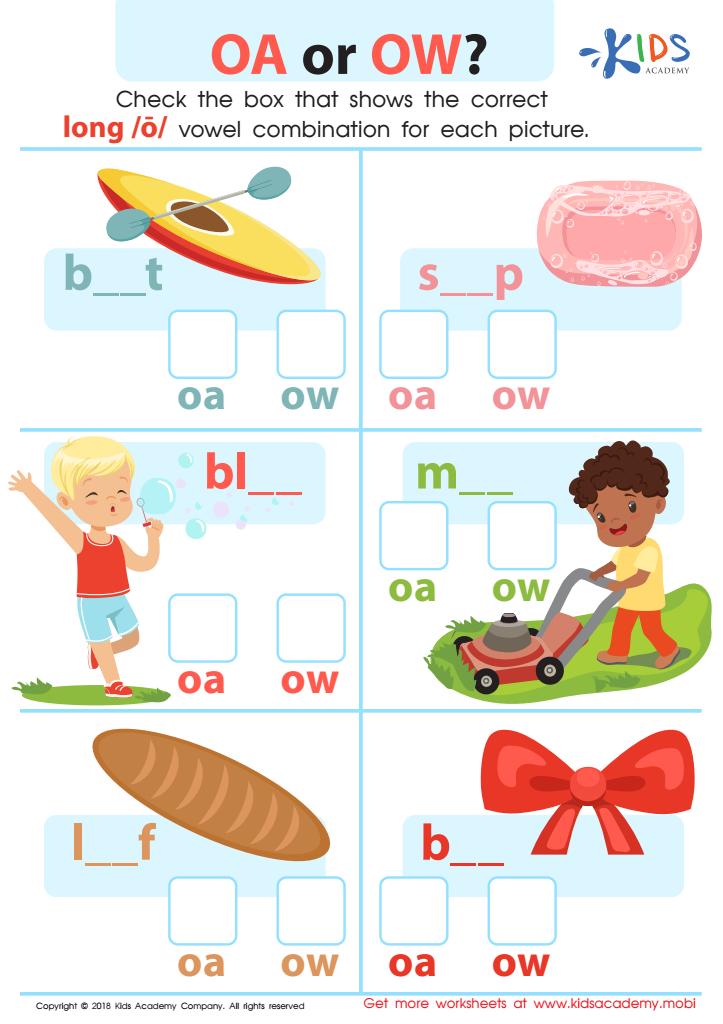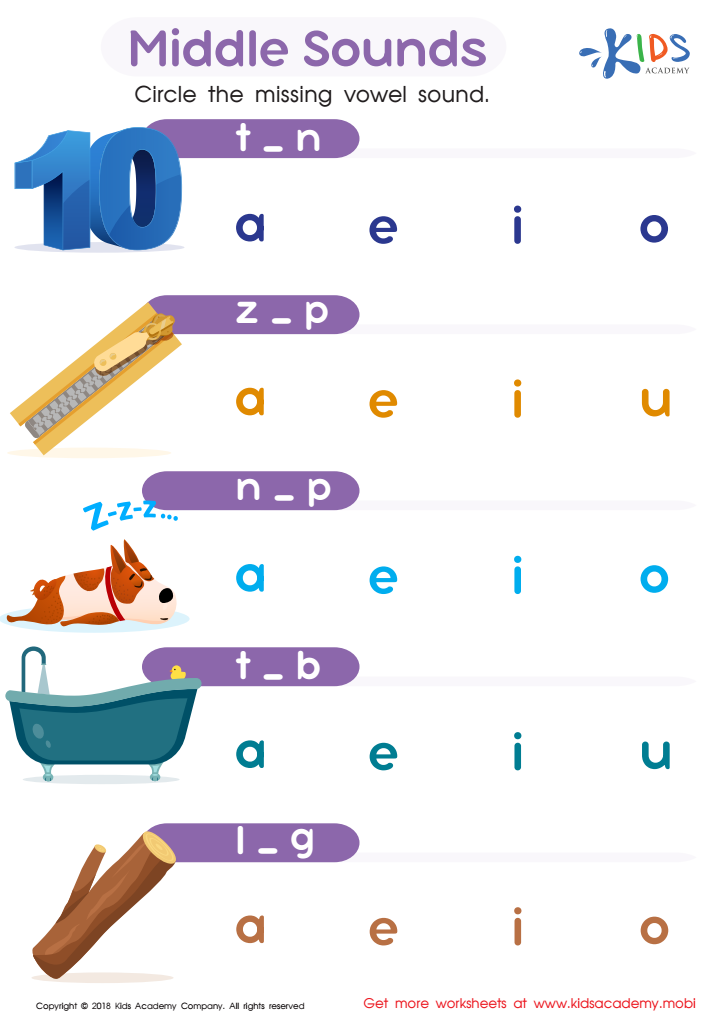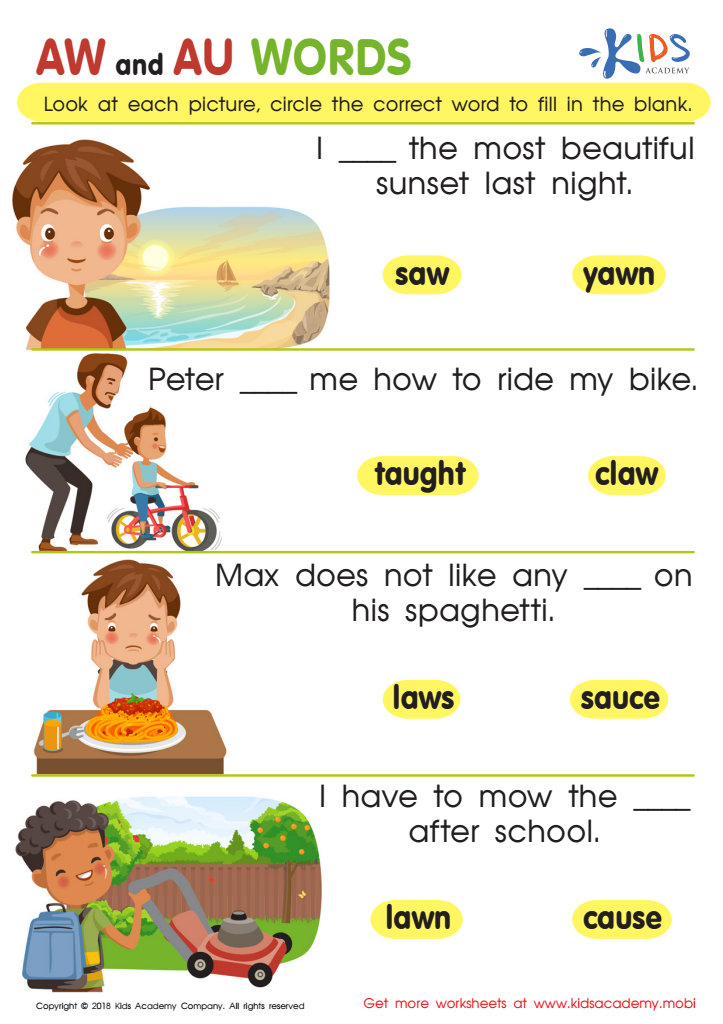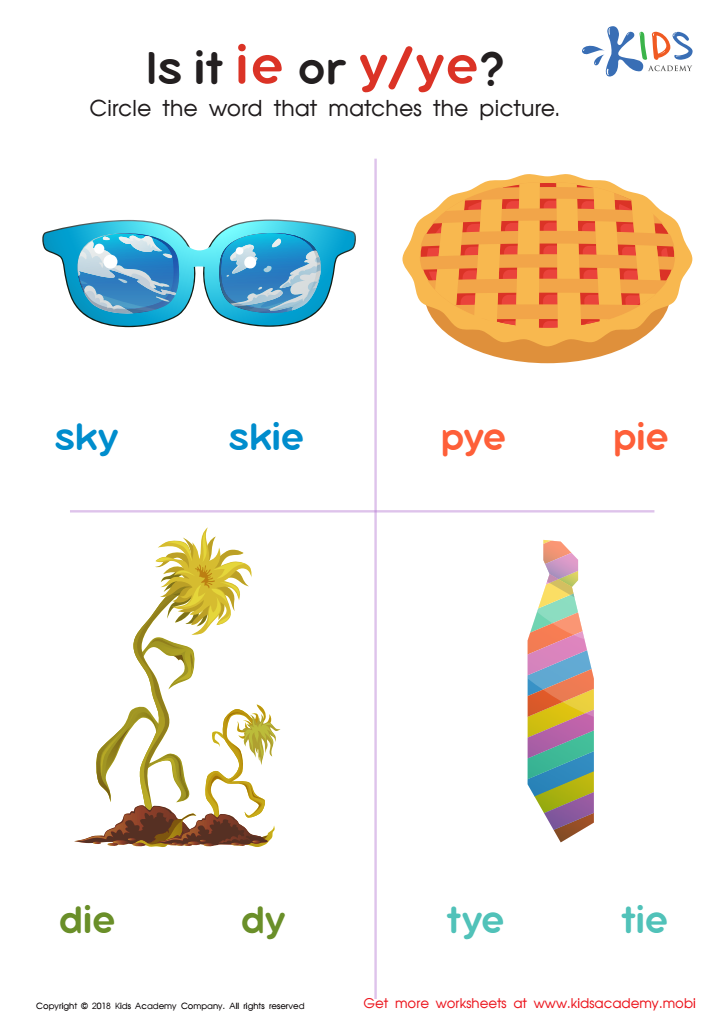Sound recognition Normal Vowels Worksheets for Ages 6-7
5 filtered results
-
From - To
Unlock your child's potential with our engaging Normal Vowels Worksheets, designed specifically for ages 6-7! These interactive activities focus on sound recognition, helping young learners identify and differentiate between vowel sounds. Each worksheet is carefully crafted to enhance phonemic awareness, making it a fun and effective tool for both teachers and parents. Kids will enjoy exciting exercises that feature vibrant visuals and relatable themes, reinforcing their understanding of vowels in different words. Perfect for classroom use or at-home learning, these worksheets are an essential resource to support literacy development and ensure a strong foundational knowledge of the English language. Dive in today!


Reading: OA or OW Worksheet


Middle Sounds Worksheet


Long and Short U Worksheet


Reading: AW and AU Words Worksheet


Is It IE or Y/Ye? Worksheet
Sound recognition of normal vowels is a crucial skill for children aged 6-7, significantly impacting their literacy development. At this age, children are transitioning from phonemic awareness to actual reading and writing, and recognizing vowel sounds plays a foundational role in that process. Vowels form the core of most words; understanding their sounds helps children decode unfamiliar words, improving their reading fluency and comprehension.
When parents or teachers emphasize sound recognition in normal vowels, they engage children in active learning. This strengthens not just reading skills but also phonetic spelling and word formation, which are essential for writing. Children begin to grasp the rules of language, fostering critical thinking and auditory discrimination, vital for overall communication skills.
Moreover, recognizing vowel sounds can boost a child's confidence. Mastery of vowel sounds allows them to tackle increasingly complex texts, promoting a love for reading. Engaging activities that nurture this skill can be enjoyable, making learning fun and effective.
In summary, parents and teachers should care about vowel sound recognition as it serves as a building block for reading, writing, and effective communication, promoting lifelong skills that extend beyond the classroom.
 Assign to My Students
Assign to My Students















